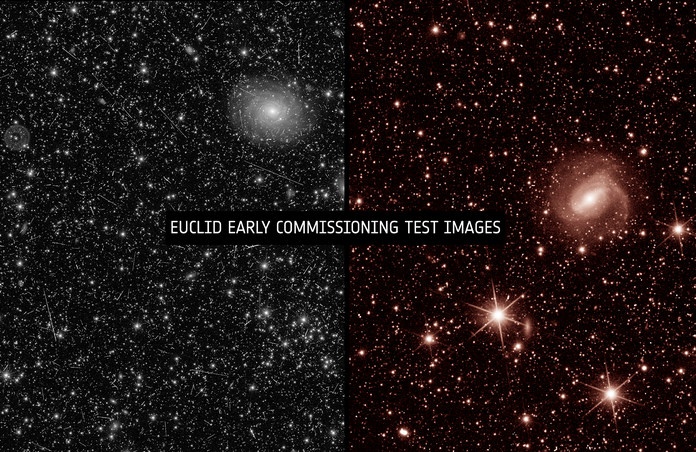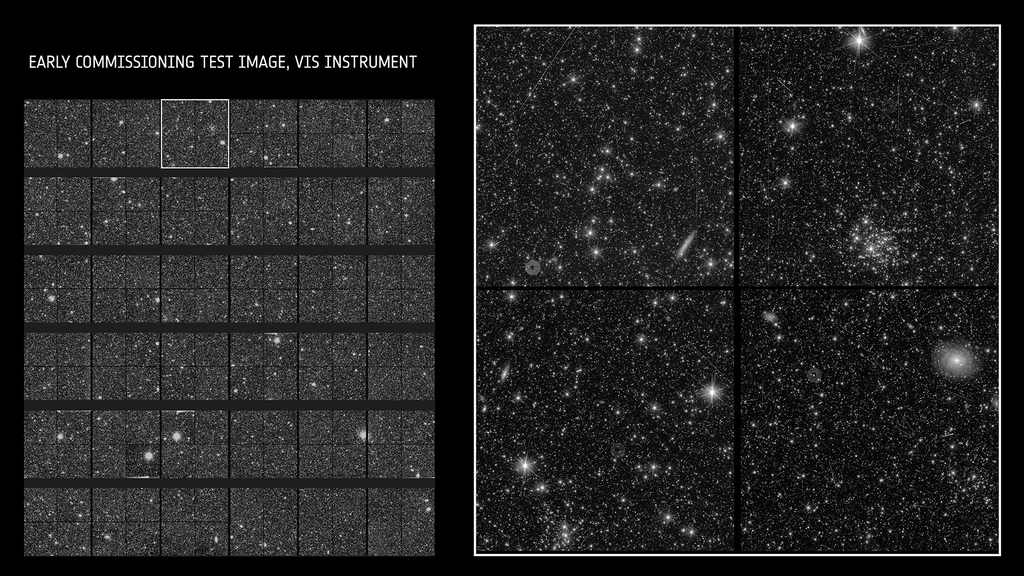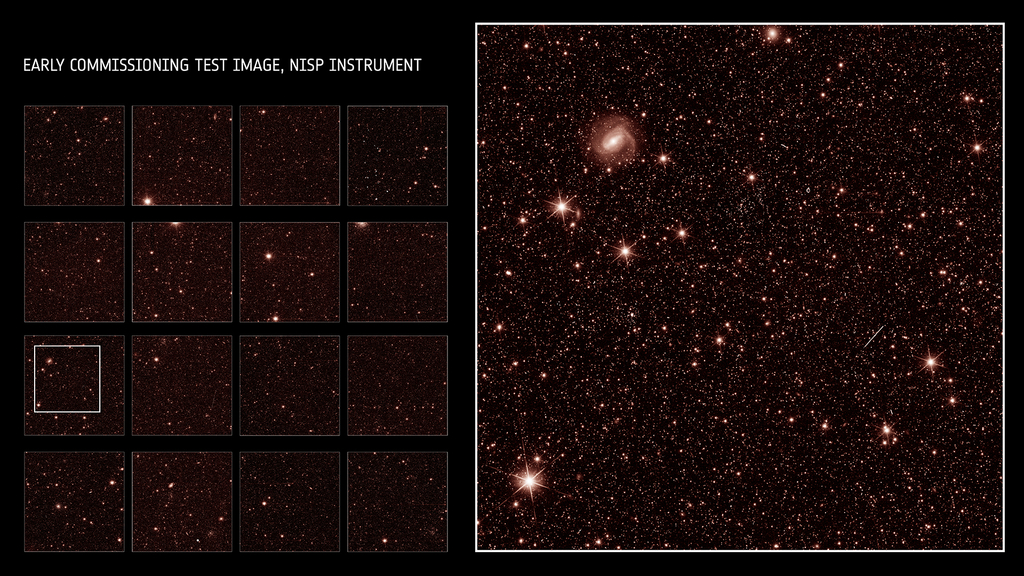Euclid's first images show a glimpse of what's to come

Euclid has captured its first test images, revealing only a fraction of the missions’ potential. This success has meant all aspects of the Euclid mission have passed crucial milestones, installing every confidence in scientists that the telescope and instruments are working well.
“After more than 11 years of designing and developing Euclid, it’s exhilarating and enormously emotional to see these first images,” says Euclid project manager Giuseppe Racca. “It’s even more incredible when we think that we see just a few galaxies here, produced with minimum system tuning. The fully calibrated Euclid will ultimately observe billions of galaxies to create the biggest ever 3D map of the sky.”
Observing the cosmos in the visible
Euclid is equipped with an instrument that observes in the visible, named VIS. The mission was initially off to a bumpy start when patterns of light were seen contaminating the images after the instrument was first switched on. Further investigation revealed the cause to be sunlight beaming through a tiny gap in the spacecraft. However, the team solved the issue by avoiding certain angles where the light would be detected.

VIS’ purpose is to capture sharp detailed images of billions of galaxies to study their shapes, being used as one of the many puzzle pieces which will allow a 3D map of the universe to be constructed. The image displays a mere example of what is yet to come, since although a number of galaxies are easy to spot, there is an abundance of out-of-focus blobs hidden amongst the chaos, hoping to be uncovered by Euclid in the future. To put the scale of this image into perspective, each high-resolution cutout measures an area of 7x7 arcseconds, which represents 1/14 the area of the moon on the sky. This means a zoomed-in version displaying a myriad of galaxies and stars is only a quarter of the width and height of the full moon! Euclid will observe around 1 million of these cutouts during the next 6 years with much longer integration times.
Mark Cropper from University College London led the development of VIS: “I’m thrilled by the beauty of these images and the abundance of information contained within them. I’m so proud of what the VIS team has achieved and grateful to all of those who have enabled this capability. VIS images will be available for all to use, whether for scientific or other purposes. They will belong to everybody.”
Uncovering the unknown in the infrared

Euclid bears the Near-Infrared Spectrometer and Photometer (NISP) instrument, which plays two important roles. NISP images galaxies in the infrared as well as measures the amount of light galaxies emit at different wavelengths. This allows scientists to determine the distances to galaxies. Two different infrared images were released, the first being similar to the VIS image. Light was first passed through a filter measuring the brightness at a specific infrared wavelength before reaching the NISP detector. However, the grism mode image shows a different perspective of the universe. In this case, light from the telescope passes through a ‘grism’, which splits light by wavelength, before reaching the detector. In the grism image, each vertical line represents the light spectrum of one star or galaxy. This technique allows scientists to determine what each galaxy is made of chemically, and calculate its distance from us.

Ultimately, the combination of information from both instruments will allow a map of the distribution of galaxies to be constructed, with time as a third axis. This will reveal how the distribution of such galaxies evolves over time, in turn uncovering insights about the nature of dark energy and matter due to the effect these constituents have on normal matter.
The next step
Over the next few months, checks and tests will continue to be carried out to make sure Euclid is working as well as possible. This involves an 8-week performance verification phase, where all properties of the instruments are reassessed. Once the commissioning and performance verification phase is over, ESA will release a new set of images to really demonstrate the possibilities of this mission.
--
Cover image: ESA/Euclid/Euclid Consortium/NASA
